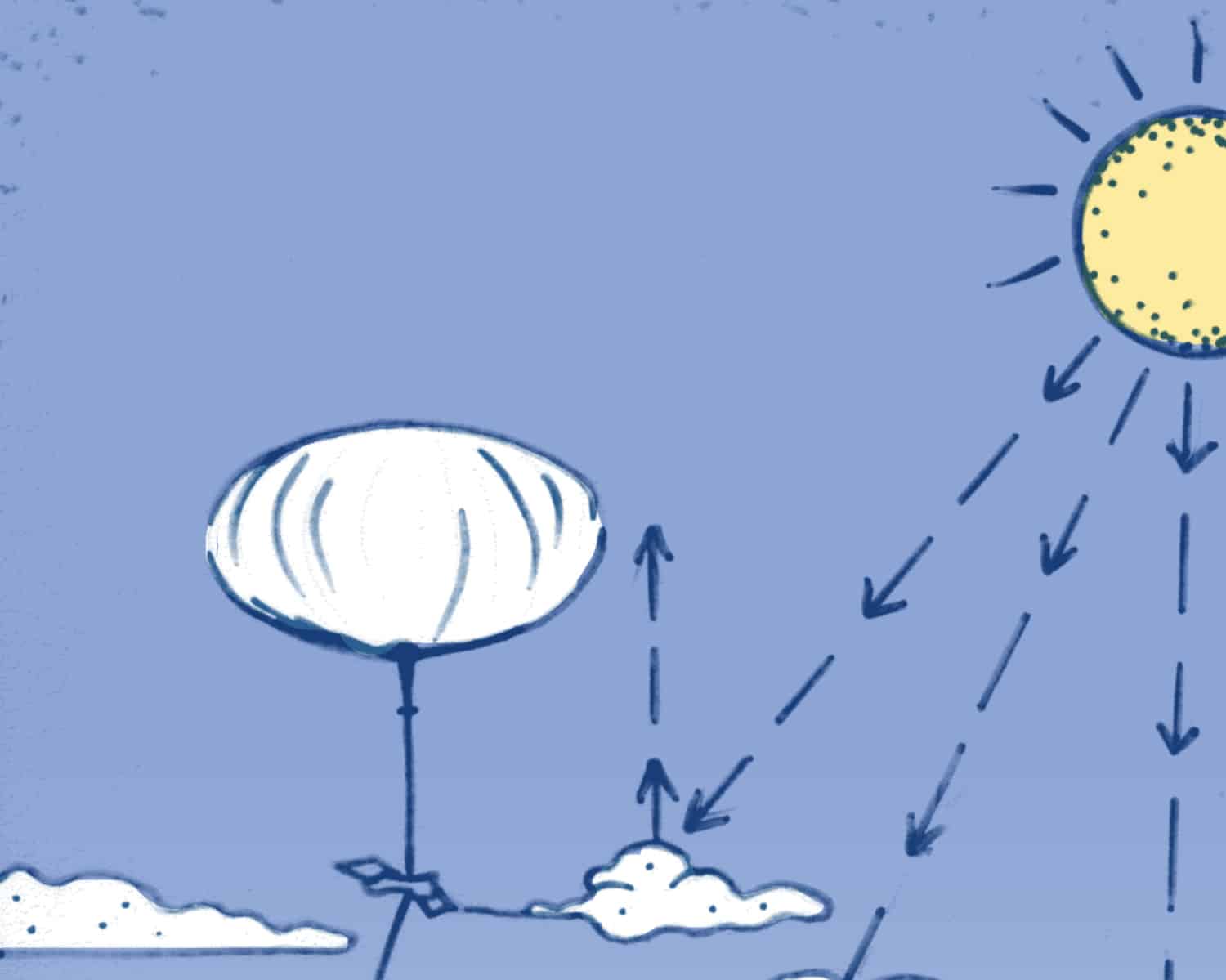Overview
Stratospheric Aerosol Injection (SAI) is a theoretical solar geoengineering proposal to spray large quantities of tiny reflective particles into the stratosphere, an upper layer of the Earth’s atmosphere, in order to cool the planet by reflecting sunlight back into space. Proposals range from spraying reflective particles, such as sulphur dioxides, finely powdered salt or calcium carbonate, from aircraft, shooting particles from artillery guns, or using large hoses to reach the sky. None of those solar geoengineering approaches address the underlying causes of climate change. In stead they aim to control the amount of incoming solar radiation by emulating the sulphur-rich dust cloud that remains in the atmosphere after large volcanic eruptions. In contrast to a volcanic outburst, SAI assumes continuous maintenance of the particle layers by regular injections.SAI using sulphur dioxide is the most-studied option. Computer simulations suggest that this technique would likely cause droughts in Africa and Asia and estimate that the SAI could endanger the source of food and water for two billion people.Because of the unequal global impacts and its potential to be weaponized, solar geoengineering carries insurmountable challenges for governance. Therefore, several hundred civil society organizations from around the world are calling for a multilateral ban on solar geoengineering.





4 thoughts on “Stratospheric Aerosol Injection (technology briefing)”
Comments are closed.